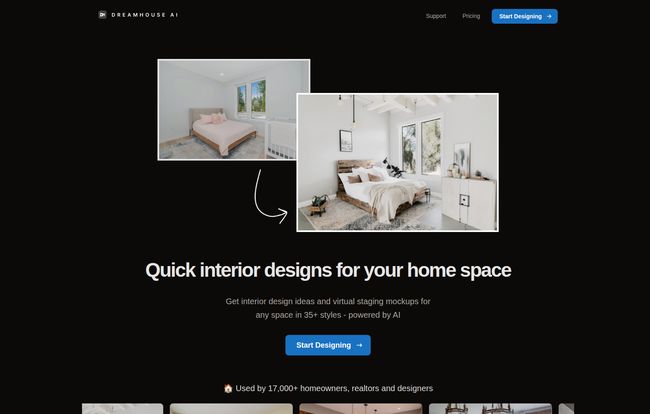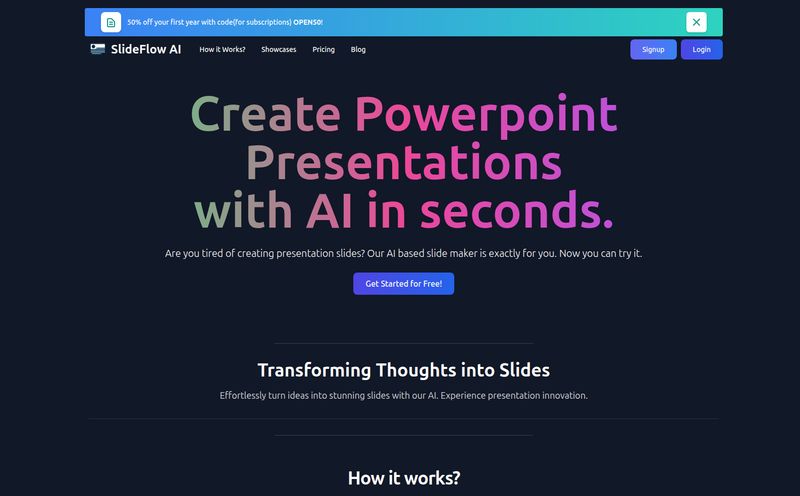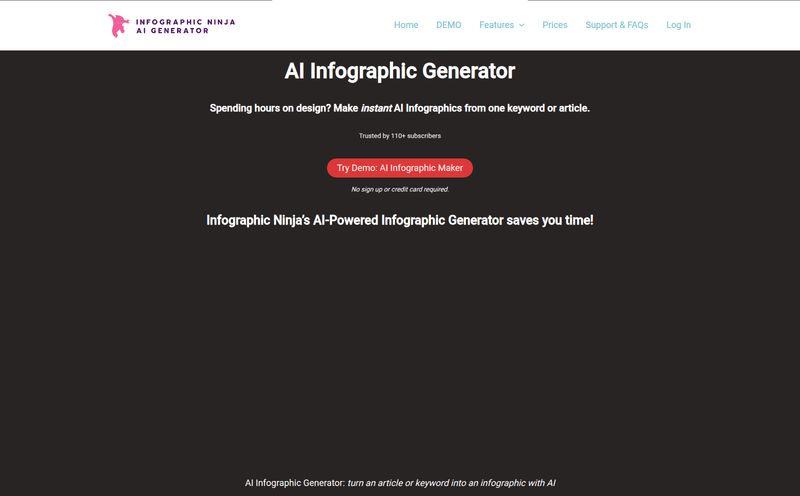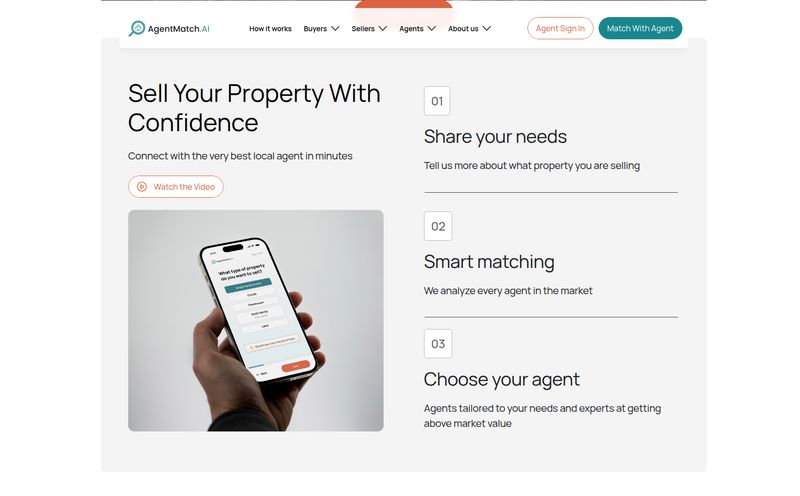Staring at an empty room is like writer's block for your living space. You know it has potential, but the canvas is just... blank. Terrifyingly blank. You scroll through Pinterest for hours, pin 300 images that all vaguely contradict each other, and end up more confused than when you started. Or worse, you’re a realtor trying to sell a property that has all the charm of a cardboard box, and you just know buyers can’t see the vision.
I've been in both boats. I've spent weeks agonizing over paint swatches that all look identical in the can but transform into wildly different shades of regret on the wall. It’s a whole process. A costly, time-consuming process.
So, when I kept hearing whispers about AI interior design tools, my curiosity was piqued. I’ve seen AI write ad copy, create images, and even code. But could it really develop a sense of style? I recently spent some time with a tool called Dreamhouse AI, and I have… thoughts. Lots of them. So grab a coffee, and let's talk about whether this thing is genuinely useful or just another tech gimmick.
So, What Is Dreamhouse AI, Really?
At its core, Dreamhouse AI is an AI-powered interior design and virtual staging tool. That’s the official description. What it feels like, though, is having a lightning-fast, slightly eccentric interior designer in your pocket. You feed it a picture of your room—messy, empty, or just plain boring—and in less time than it takes to make toast, it spits back a fully redesigned, photo-realistic version of that same space. We're talking under 10 seconds. It's frankly a little bit wild to see in action.
It’s built for homeowners paralyzed by choice, real estate agents needing to jazz up a listing, and even professional designers looking for a quick brainstorming partner. It doesn't just suggest a new couch; it rebuilds your entire room in over 35 different styles, from Minimalist to Maximalist, Coastal to Cyberpunk (yes, really).
How Does This AI Wizardry Actually Work?
I was expecting a complicated interface. Something with a learning curve. I was wrong. The whole process is so simple, it almost feels like cheating. Seriously, it's three steps:
- Upload a Room Photo: You take a picture of the space you want to transform. An empty room, your current living room, a photo from a listing, whatever. The better the light and angle, the better the result, but it's surprisingly forgiving.
- Choose Your Style: This is the fun part. You get a menu of design styles. Do you want to see your bedroom in a 'Bohemian' style? Click. Curious about a 'Mid-Century Modern' kitchen? Go for it. You just pick your poison.
- Your Design is Ready: You blink, and it’s done. The AI analyzes the architecture of your room—the windows, the doors, the layout—and then completely re-imagines it in the style you chose, complete with furniture, lighting, decor, and textures.
And that’s it. No complicated software to install. No design theory lectures. Just instant visual feedback. It's incredibly satisfying.
Who Is This Tool Actually For?
I see a few groups getting a massive kick out of this. It’s not a one-size-fits-all solution, but for certain people, it's a game-changer.
The Indecisive Homeowner
This is me. This is probably you. You want to paint the living room, but you're scared of picking the wrong color. You think a new layout might work, but what if it just makes the room feel cramped? Dreamhouse AI removes that expensive guesswork. You can 'try on' dozens of looks for your actual room before you ever pick up a paintbrush or spend a dime on new furniture. It's the ultimate 'try before you buy' for home renovation.
The Savvy Realtor or Property Manager
Okay, from my SEO and traffic-gen background, this is where my brain really starts buzzing. We all know that staging a home sells it faster and for more money. The National Association of Realtors has studies on this. But physical staging is a logistical nightmare and costs thousands. Virtual staging is the answer. Instead of showing potential buyers an empty, soulless room, you can show them ten different ways it could look. You can furnish a vacant apartment listing in seconds, making it feel like a home. This is how you stop scrollers on Zillow and get them to book a viewing. It's a massive competitive edge.
The Busy Interior Designer
Some designers might scoff, thinking an AI can't replace the nuanced, human touch of a professional. And you know what? They're not wrong. But that's missing the point. This isn't about replacing a designer; it's about giving them a superpower. Imagine being able to generate five different mood boards for a client's concept during the initial meeting. It's a tool for rapid ideation. It helps you get on the same page with a client faster than ever, saving you from endless revisions down the line. It's an assistant, not a competitor.
A Buffet of Design Styles
The variety here is pretty impressive. We’re not just talking 'Modern' vs 'Traditional'. The platform boasts over 35 styles, and some of them are wonderfully specific. You can instantly see your space transformed into:
- Art Deco
- Bohemian
- Coastal
- Contemporary
- Minimalist
- Mid-Century Modern
- And a whole lot more...
This is where you can let your imagination run wild. Ever wondered what your suburban kitchen would look like with a rustic, farmhouse vibe? Or a sleek, industrial edge? Now you can know in seconds. It’s a visual playground.

Visit Dreamhouse AI
Let's Talk Money: The Dreamhouse AI Pricing
Alright, the big question. What does this magic cost? I was pleasantly surprised to see they have a flexible, credit-based system that doesn't require selling a kidney. It seems they've updated their plans recently, moving away from a vague 'unlimited' model to something more concrete.
Based on their current pricing page, here’s the breakdown:
| Plan | Price | Credits | Best For |
|---|---|---|---|
| Design Pro (Weekly) | $9.99 / week | 250 credits | The one-off project. Perfect for a homeowner redoing a single room or a realtor with a quick listing to stage. |
| Design Pro (Monthly) | $39 / month | 1200 credits | The professional user. Realtors, designers, or serious hobbyists who will be using the tool consistently. |
Both plans give you access to all the design styles, premium quality renders, and a commercial use license, which is crucial for professionals. You can also cancel anytime, which removes a lot of the risk. I appreciate the transparency of the credit system – you know exactly what you’re getting. A single render probably uses a handful of credits, so 250 goes a pretty long way for a specific project.
The Good, The Bad, and The AI
No tool is perfect, and a healthy dose of skepticism is always a good thing. After playing around with it for a while, here's my brutally honest take.
What I Absolutely Love
The speed is intoxicating. The jump from a drab 'before' photo to a stunning 'after' in seconds is pure dopamine. It completely obliterates creative blocks. The cost-effectiveness is also a huge win. Compared to hiring a designer for an initial consultation or paying for physical staging, the value here is off the charts. And the sheer variety of styles encourages experimentation in a way that just wasn't possible before. It makes design feel fun and accessible, not intimidating.
Where It Could Improve
Let's be real, the AI isn't a mind reader. While the designs are beautiful, they can sometimes feel a bit… generic. It won't know that you want to keep your grandma's antique armchair or that you have a weird obsession with llama-themed decor. The final design lacks that deep personal story that a human designer can weave into a space. Also, the quality of your final render is heavily dependent on the quality of your original photo. A dark, blurry photo taken from a weird angle will yield, well, a dark, blurry render from a weird angle. Garbage in, garbage out, as they say. It's a powerful tool, but not a miracle worker.
Frequently Asked Questions
Can I use my own furniture in the designs?
Not directly in the initial generation. The AI generates a complete look, including furniture, based on the selected style. However, their Pro plan mentions the ability to 'Place custom decor', which suggests more advanced editing features are available for subscribers to fine-tune the results.
Is Dreamhouse AI free to try?
Yes, the website usually offers a free trial or a certain number of free renders so you can test it out before committing. It’s a great way to see if it works for your space without pulling out your credit card.
What happens to my designs? Are they saved?
Yes, the platform saves your design history in the cloud. This is incredibly helpful for comparing different styles for the same room or going back to an idea you liked from a few days ago.
Can I use the images for my real estate listings?
Absolutely. The paid plans come with a commercial use license, which is exactly what you need for things like MLS listings, marketing materials, or a professional design portfolio.
How realistic are the renders?
They are surprisingly photo-realistic. The lighting, shadows, and textures are very well done. They are convincing enough to give a potential buyer or a client a very clear and appealing vision of the space.
Final Thoughts: Is It Worth It?
So, what’s the final verdict? Dreamhouse AI is a genuinely impressive and incredibly useful tool. It's not going to replace the soul and bespoke expertise of a human interior designer for a high-end, custom project. Let’s just get that out of the way.
But for 90% of the everyday design challenges we face? It’s fantastic. For realtors, it's practically a must-have tool for marketing in 2024. For homeowners, it's a fun, powerful, and risk-free way to explore your home's potential. It transforms interior design from a daunting, expensive task into an exciting, creative experiment.
Will I keep using it? You bet. My tragically beige home office is now a 'Minimalist' sanctuary on my screen, and I finally have a clear plan. And for that alone, it was worth every second.



